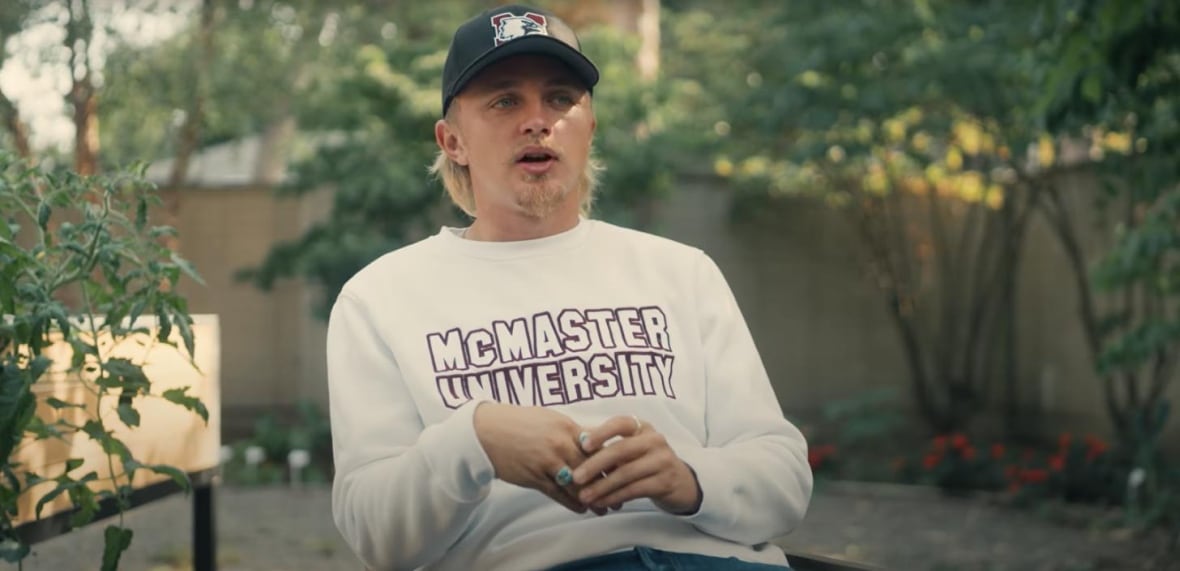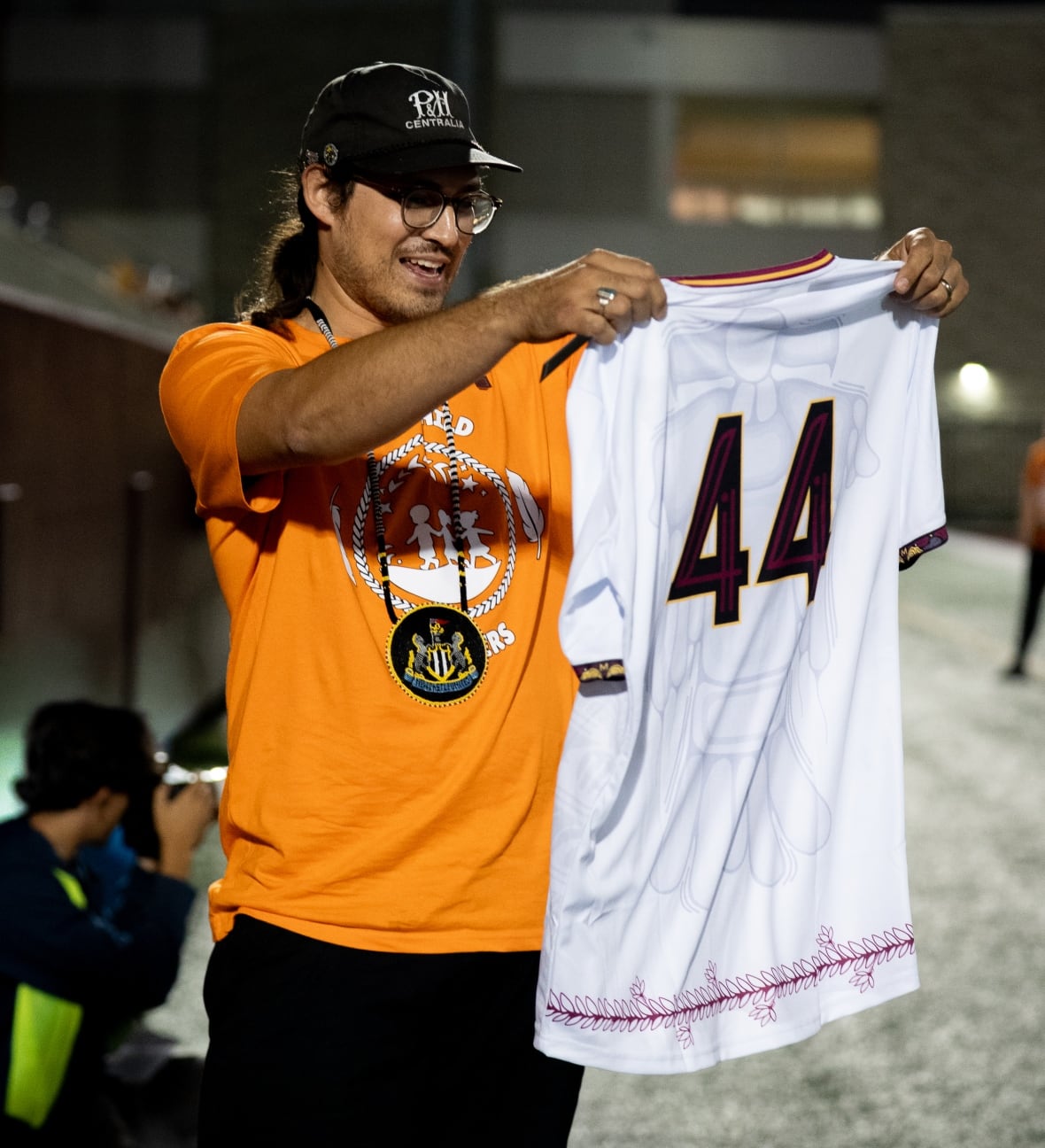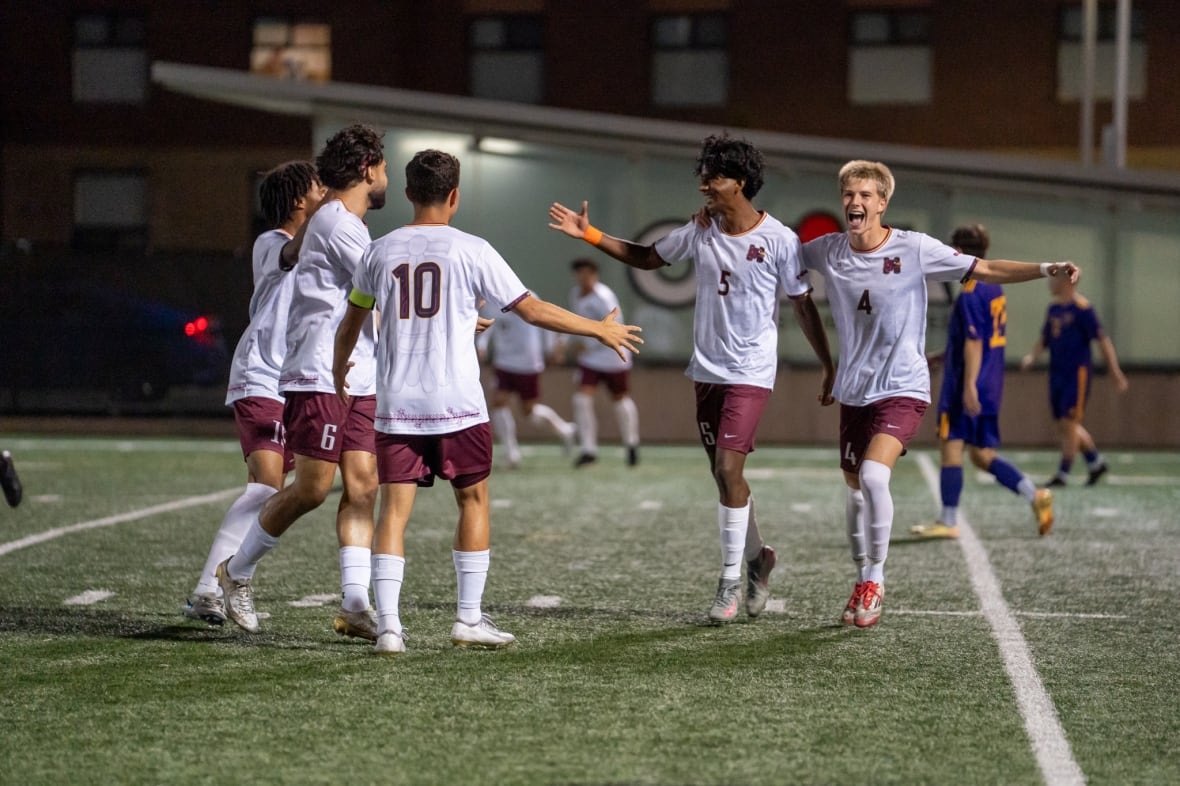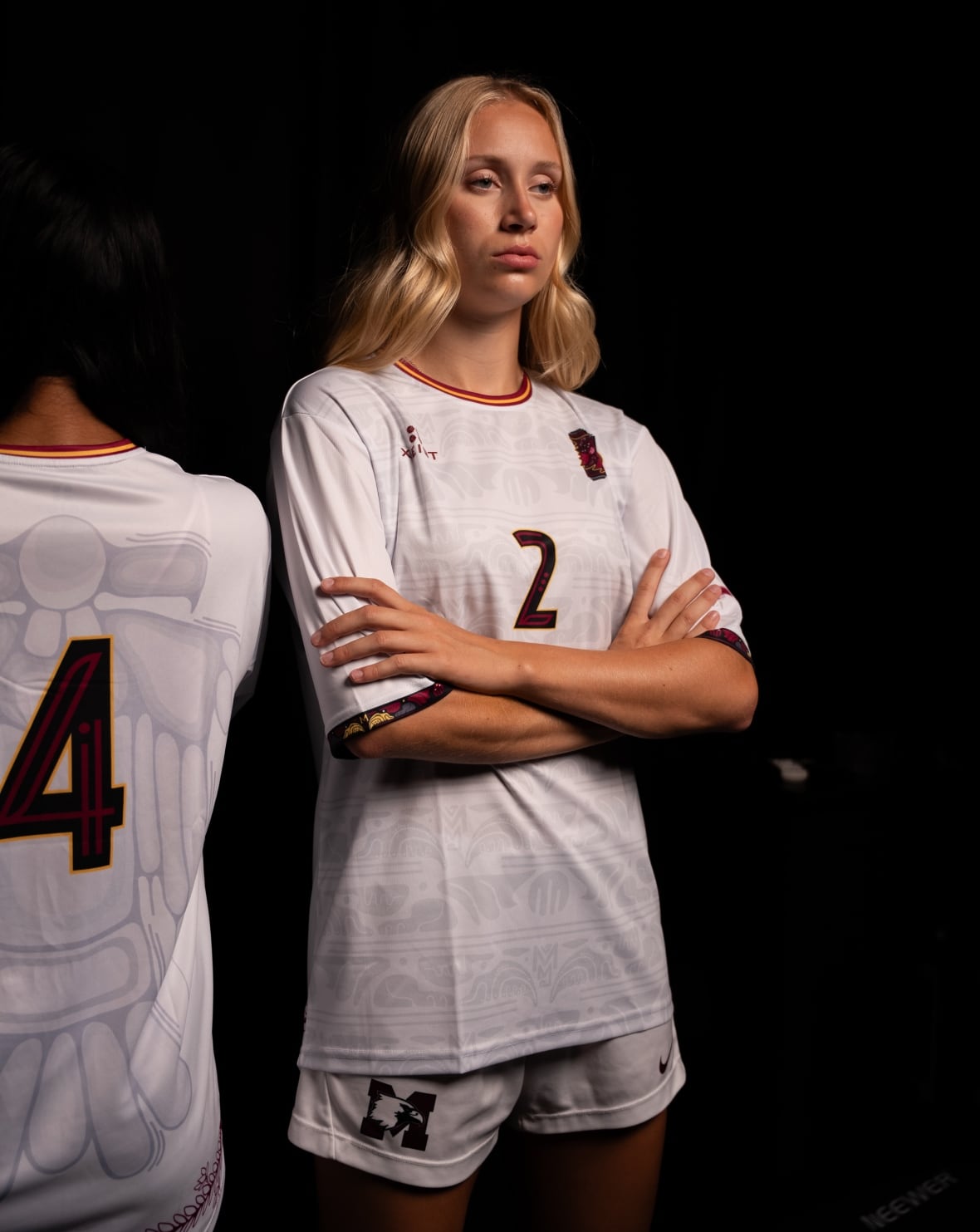New version of McMaster Marauder logo aims to uplift Indigenous athletes and celebrate success, says student

A new Indigenous version of McMaster University's Marauder logo blends Indigenous symbolism with the Hamilton university's tradition in a bid to foster belonging and reconciliation, the school says.
The logo, which incorporates Indigenous patterns and symbolism with McMaster's "athletics identity," was developed by Cayuga Woodland artist Kyle Joedicke, with input from the Indigenous Student-Athlete Council (ISAC), Indigenous Student Services (ISS) and the Equity and Inclusion Office, said the university.
The design — with an eagle as the focal point — blends Indigenous patterns and symbolism with the school's longstanding athletics identity, a McMaster news release said.
Joedicke said his design was inspired by the Seven Grandfather Teachings.
"In that teaching, the eagle represents love — not just for oneself or one's family, but an unconditional love that extends to community and creation. The eagle is also a symbol of connection to the Creator," he said in the news release. The design also incorporates Woodland-style "spirit lines," to convey the flow of spirit and the bonds linking people with their ancestors and knowledge through the generations.
'A big part of who I am'For Indigenous student athlete Seth Cabezas, the new logo "represents a really big part of who I am and a part that I'm really proud of that isn't necessarily showcased other places."
Cabezas, who's Anishinaabe and Métis from Treaty 9 territory, is a baseball player in his fourth year of studying Indigenous studies and history.
He's also co-president and one of the co-founders of the ISAC, which seeks to create community for Indigenous athletes at McMaster.

ISS director Chrissy Doolittle said the logo design is an important visual representation of the Indigenous community.
"The Marauder logo is something that everybody recognizes as being a symbol to represent McMaster and athletics," Doolittle told CBC Hamilton.
"To have an Indigenized version of that is something that our Indigenous student athletes as well as our Indigenous community can really see themselves being a part of."

The new design was commissioned to coincide with the fifth National Day for Truth and Reconciliation, which was observed on Tuesday. It debuted last Friday during McMaster's truth and reconciliation soccer doubleheader, where the women's and men's teams wore custom jerseys designed by Joedicke, featuring his woodland art style.
Doolittle, who is Mohawk from Six Nations of the Grand River Territory, said the National Day for Truth and Reconciliation is a good time for non-Indigenous members of the McMaster community "to just pause and reflect on the learning and the education opportunities that they can partake in that will help them to have a better understanding of the history of Indigenous Peoples within Canada."
It's also an opportunity "to understand how they can create genuine, authentic relationships with our Indigenous community," Doolittle said.

Joedicke grew up between Caledonia and Six Nations of the Grand River. As a self-taught artist, his work reflects Haudenosaunee stories and cultural teachings, the McMaster news release says.
Joedicke's practice is influenced by West Coast Haida art, the late Norval Morrisseau, who was from Ojibway Bingwi Neyaashi Anishinaabek First Nation in northwestern Ontario, and graffiti culture.
A recipient of a Hamilton Arts Award, Joedicke has created large-scale murals across Ontario and collaborated with the CFL's Hamilton Tiger-Cats, Forge FC of soccer's Canadian Premier League and the University of Waterloo. He also serves as an artist ambassador for the Gord Downie & Chanie Wenjack Foundation.
Joedicke said the project was a personal milestone, but, more importantly, a way to give Indigenous students and community members a sense of ownership on campus.
"It's hard, in this society, as an Indigenous person living in an urban environment, to really see yourself reflected in the world that you're living in," he said. "If this logo works in even a small way to change that mindset, to let someone feel more welcome, then that's all that I want to come out of it."
How the logo is helping inspire studentsThe logo has led to more students wanting to learn about ISAC and get in touch with the group, Cabezas told CBC in an interview on Tuesday.
The council was created three years ago.
"We really want to inspire the next generation of Indigenous youth to seek out post-secondary education and not feel afraid or ashamed of being Indigenous," he said.
"This logo and [the National Day for Truth and Reconciliation] demonstrate the resilience of our people and the relentless effort we all make to continue to survive and operate within these colonial systems.
"It's just about continuing to uplift our communities and celebrate each other and our successes. And I think the more we do that, the more we'll see each other ... in these Western institutions."
Cabezas also shared more about the council in a video McMaster released on Tuesday.

Keenan Jeppesen, McMaster's athletics and recreation director, said the department recognizes the logo is only one small step in a series of plans to enhance the experience of McMaster's Indigenous community.
"We know there's so much work to be done in truth and reconciliation, and so this is not the end for us," he said in a post on McMaster's website.
"We'll continue to listen and learn and try to build and contribute to that as much as possible. Through this logo, we can immediately build that bridge into the community, invite people in, and really further the university role in truth and reconciliation."
cbc.ca





